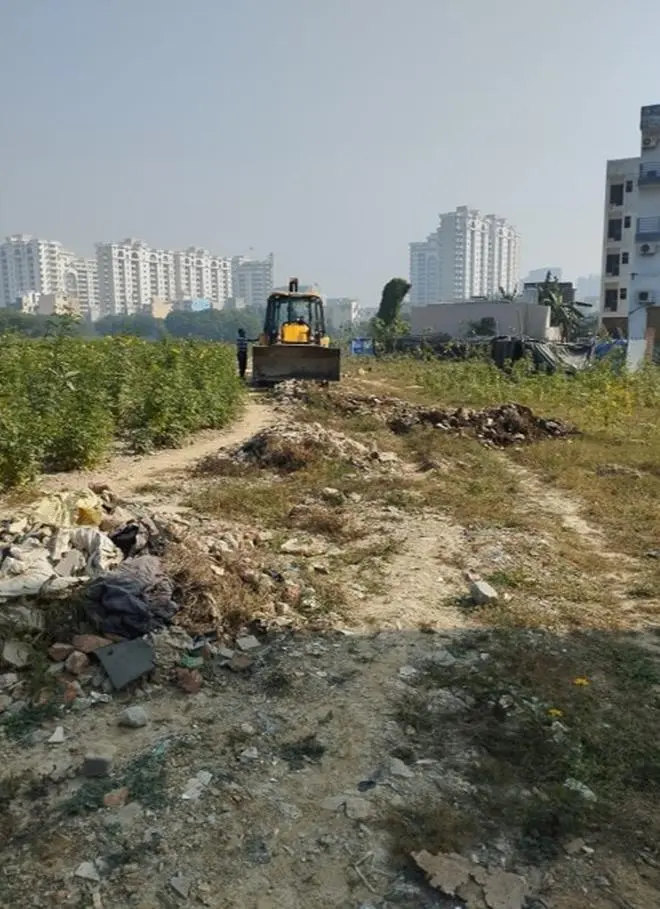We can’t run away from the fact that our cities are flooding from time to time due to incessant rain, but our metros are ironically facing water shortages with groundwater levels plummeting. Though urban infrastructure is expanding fast, a lot of it is also crumbling from disrepair and neglect. And that’s where the Sustainable Environment and Ecological Development Society (SEEDS) decided to intervene.
A disaster response organisation for over three decades, it is searching for and implementing nature-based solutions to reduce urban distress. “The drainage capacity of cities is reducing, and our intervention has been to revive the local water bodies so that they can work as absorbers or sponges,” says Co-founder Manu Gupta.

At Jharsa, SEEDS brought together local partners and seven resident welfare organisations to clean up a 2.47-acre area
Apart from the technicalities of the project, what stands apart in SEEDS interventions is its people-centric approach to the issue. It involves citizens who live in the vicinity to help both physically and monetarily in the process, giving them a sense of ownership of the project.
Restoration work
In NCR Gurugram, SEEDS has worked on a few water bodies including giving a makeover to the Jharsa pond and restoring the Wazirabad lake.
At Jharsa, SEEDS brought together local partners and seven resident welfare organisations to clean up a 2.47-acre area, including the one-acre pond and restore its ecology. Together, they converted it from a neglected, dirty pond where waste was dumped into a picnic spot that could be enjoyed by the 657 residents of the vicinity.

At Jharsa, SEEDS brought together local partners and seven resident welfare organisations to clean up a 2.47-acre area
The restoration of the Wazirabad Lake required the help of bioremediation techniques to enhance water quality, absorb excess rainwater and prevent flooding in the area. Alongside SEEDS helped construct a lake view park for the community, with a children’s play space, a jogging track, and a public gym
Key project
Similarly, one of its important projects in Bengaluru is the restoration of Huvinayakanahalli Lake in North Bengaluru. Along with local partners, SEEDS undertook the unblocking of the drainage channels of the lake, desilting it and implementing wetland plantation. The aim was to preserve and enhance groundwater levels, encourage local biodiversity to flourish, and rejuvenate its ecosystem. This was done with the help of residents, especially farmers in the area.
The restoration of Huvinayakanahalli Lake in North Bengaluru
Though involving the local community in such projects takes some time and effort, Gupta feels that it is this active engagement, especially of the youth, that makes the difference. “As we build ownership, they see the value of involvement,” he says.





Comments
Comments have to be in English, and in full sentences. They cannot be abusive or personal. Please abide by our community guidelines for posting your comments.
We have migrated to a new commenting platform. If you are already a registered user of TheHindu Businessline and logged in, you may continue to engage with our articles. If you do not have an account please register and login to post comments. Users can access their older comments by logging into their accounts on Vuukle.